- Camping Tips
- Hiking Tips
- RV Camping
- Destinations
- Blog
- Gear Reviews
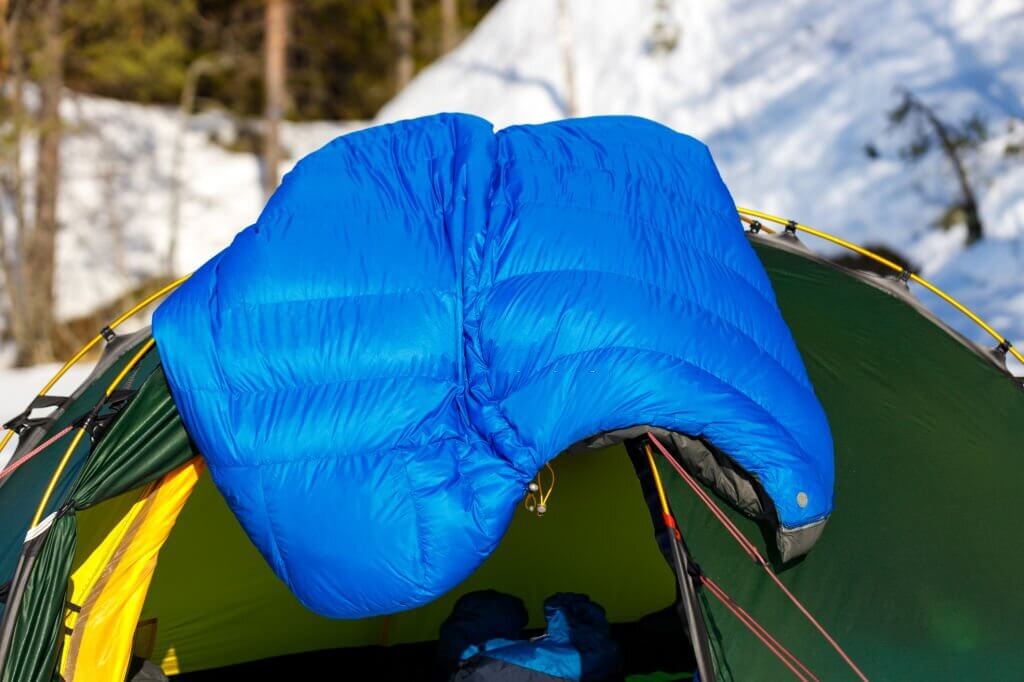
Whether you’re camping in your backyard or the boonies, a cozy sleeping bag with a hoodie is a sure way to guarantee a restful night’s sleep.
Unfortunately, sleeping bags tend to start getting stinky, musty, or grimy over time given the amount of abuse they take. Prolonged exposure to the unforgiving elements, sweat, and body oils, etc. may easily leave your sleeping bag looking dirty and gross.
There’s also the increased risk of losing or damaging your sleeping bag’s loftiness, breathability, and insulative qualities. All is not lost, though. Washing a down or synthetic sleeping bag is easy and doesn’t have to be overly complicated.
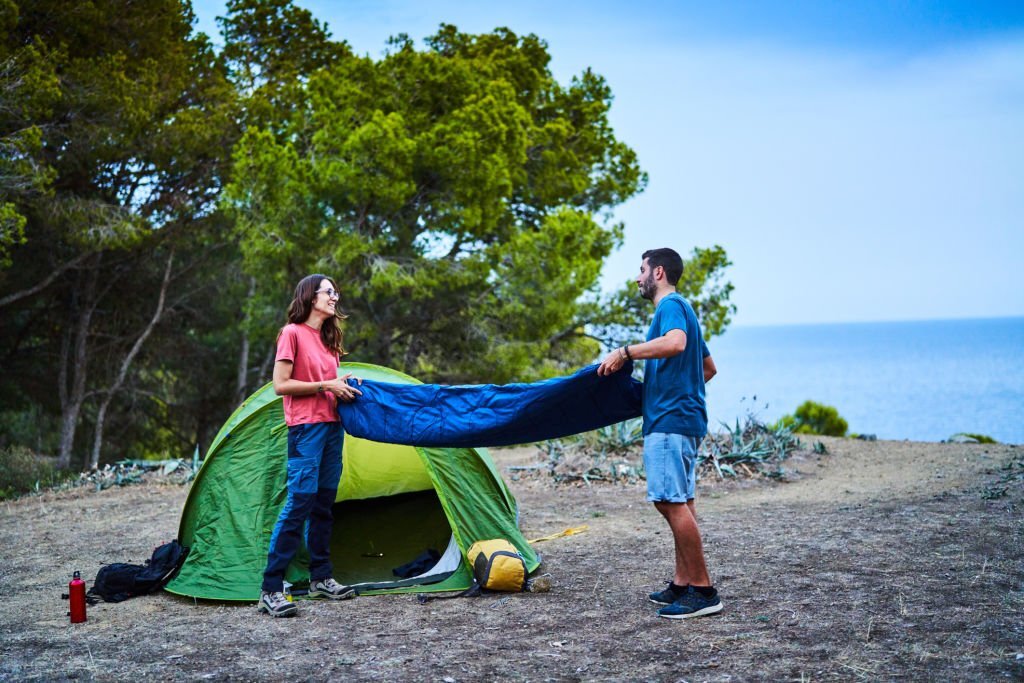
Before grabbing your detergents and bleaches, it’s important to note that your sleeping bag is made to withstand grime and considerable abuse, unlike your home blankets and duvets. So, you’ll want to clean it only when necessary.
Cleaning your sleeping bag after every use is not advisable as that would lessen its lifespan. If you don’t go camping too often, washing once or twice per year is passable. Otherwise, if you use it repeatedly then you can wash the bag a couple more times than once.
The best time to wash your sleeping bags is usually just before you store it away for the next camping season.
If your sleeping bag is not too dirty, smelly, or greasy, then spot cleaning and light hand washing should suffice.
A sponge and a basin of lukewarm water with a few drops of laundry detergent are all you need. Wipe or dab gently on the affected areas until satisfied then air dry as needed.
However, if your sleeping bag needs a full deep clean, you will need extra supplies. Also, keep in mind that down sleeping bags differ from synthetic bags in the way they should be washed and taken care of.
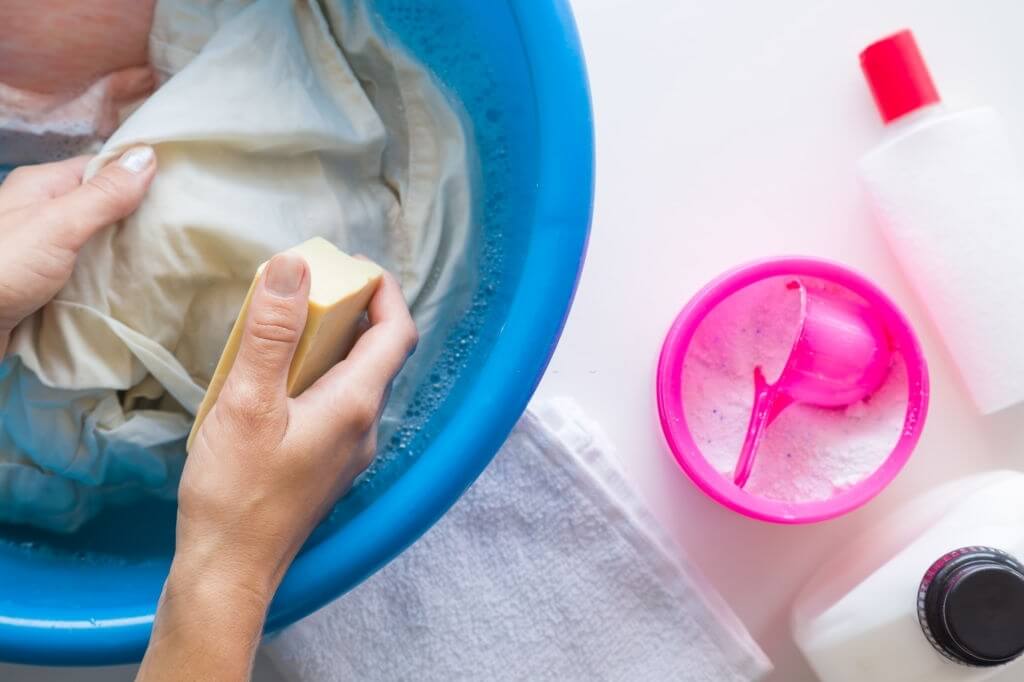
You’ll want to check the manufacturer-listed materials and cleaning instructions on the sleeping bag’s packaging or care tag. Such information tends to be the most reliable when it comes to taking care of your sleeping bag.
Firstly, your detergent of choice should be designed for synthetic or down sleeping bags (or both) for the best results. If you have none at hand, some mild soap should suffice to some extent.
Keep off regular laundry detergents and soaps as they may damage your precious sleeping bag. They tend to leave behind residues, which may affect the bag’s loftiness or clog up pores on the fabric meant for its breathability.
Regular laundry detergents may also inhibit the effectiveness of the bag’s durable water repellent (DWR) coating.
Using the wrong cleaner on a down sleeping bag would also most likely result in clumped-up down feathers and you don’t want that!
Further, fabric softener, household detergents and cleansers, and bleaches should NEVER be used to clean your sleeping bag. Such options will most likely reduce the water-resistant qualities of your bag and squelch its overall performance.
Instead, stick to the specialty cleaning solutions available for down or synthetic bags.
Brands such as Nikwax, ReviveX, Granger’s, and Gear Aid should be a good place to start for your -cleaner shopping. In some cases, these fiber-specific cleaners can restore or add water repellency to your bag without affecting its insulation or fill power.
Secondly, any washing machine with an agitator should be avoided at all costs as the motion could twist and tear the sleeping bag. A top-loading washer just won’t cut it; however, your home front-loading machine may be sufficient for some bags.
Still, it’s more than likely that your home washer and dryer won’t be strong or spacious enough for cleaning some types of sleeping bags.
Feel free to visit your local laundromat, if needed – their industrial-sized front-loading washers are perfect for the exercise. Such large washers usually have plenty of room to clean and expel water out of any sleeping bag regardless of thickness.
You’ll also need a dryer for quicker drying else air drying will suffice. Cotton towels or a few clean tennis balls, clean sneakers, or wool dryer balls should also be at hand.
For the heavily stained sections that need hand washing or spot cleaning, you will need a sponge, a soft-bristle brush or a toothbrush, a small piece of cloth, a large bucket or basin, and plenty of water.
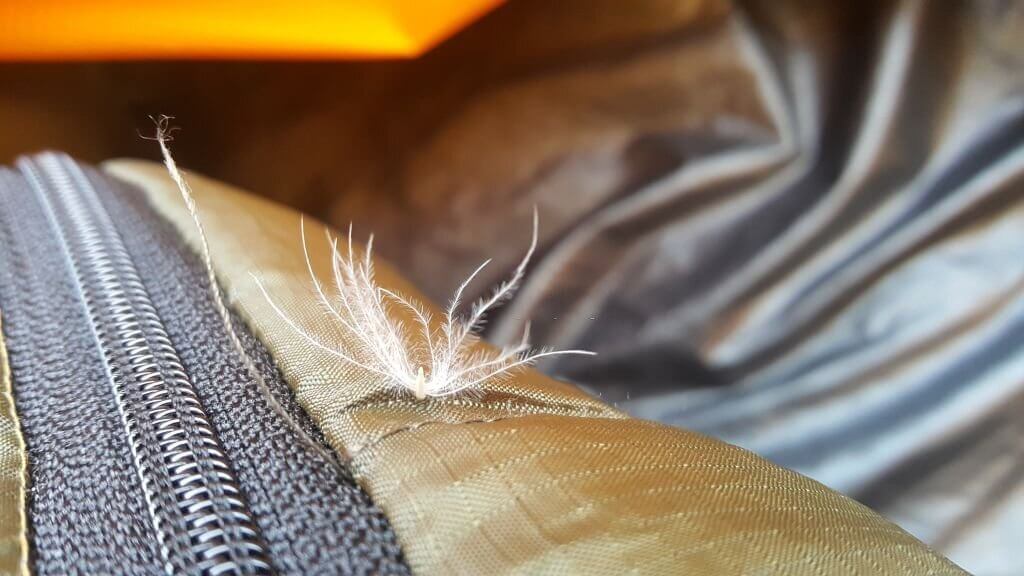
When washing down sleeping bags, the main goal is to avoid breaking down the individual feathers without fail. Else, the down feathers will clump together when wet and further degrade the bag’s performance.
Follow the steps below in conjunction with the manufacturer’s care/cleaning guidelines for a fresh and clean down sleeping bag.
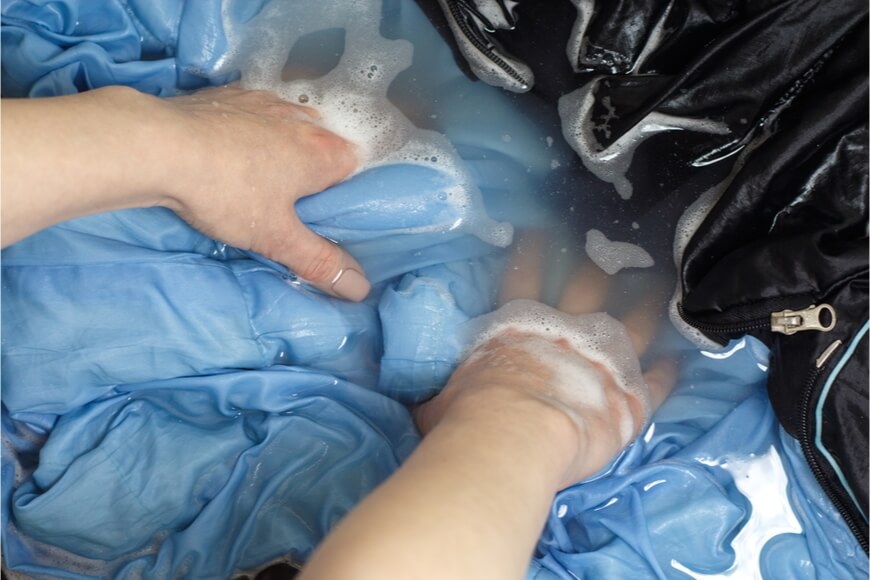
Avoid wringing or twisting the sleeping bag; instead, roll it gently into a cylindrical shape and squeeze lightly to expel the water out. Take note that washing by hand should be done most preferably when it’s hot and sunny outside for quicker drying.
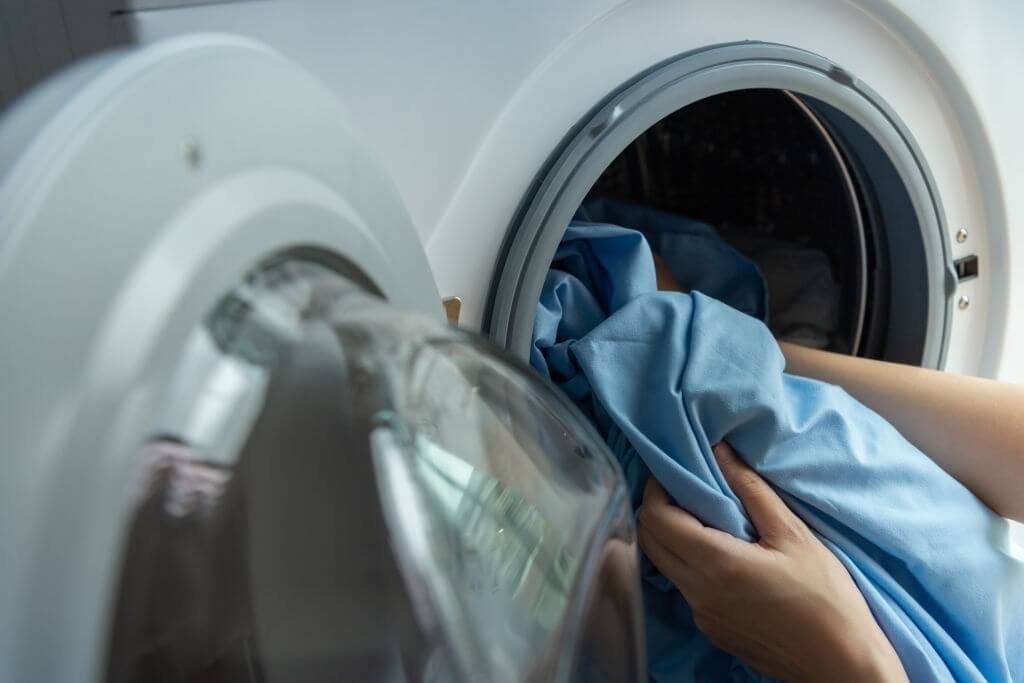
If you don’t have the patience or energy to endure the strenuous handwashing, then a front loader might do the trick for most down sleeping bags. That’s if your home washing machine cleans by spinning vertically and is of relatively high capacity. Else, to the laundromat you go...
Further, you’ll need tennis balls and a specialty cleaner. Always follow the manufacturer’s cleaning instructions whenever provided.
Throwing in heavy cotton towels with the bag may also help speed up the drying process as they’re very effective in absorbing moisture.
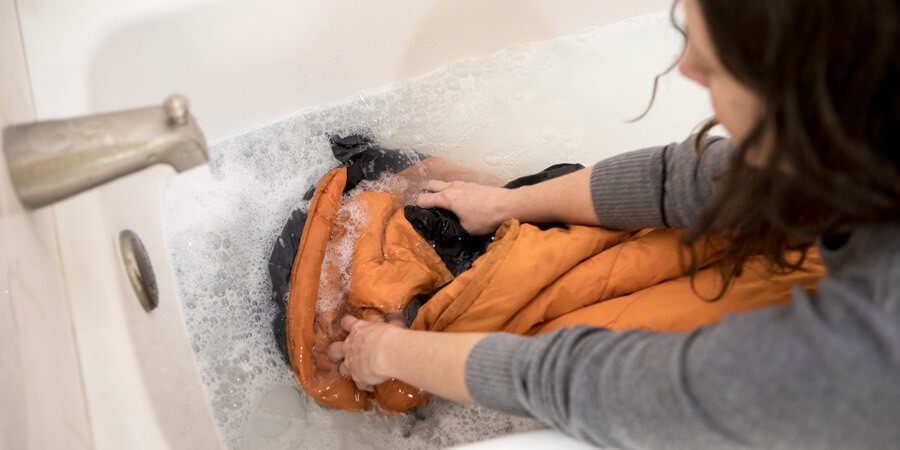
Synthetic bags are not as delicate to wash or take care of as are down sleeping bags. They will require a similar washing process as that of down bags with a few substitutions here and there.
Unlike with down bags, tennis balls won’t be necessary when drying your synthetic sleeping bags as they don’t clump up too much when wet. Additionally, synthetic bags take less time to dry completely as compared to down sleeping bags.
You’ll still want to avoid using top-loading machines as their agitators can be rough on any type of sleeping bag.
Make sure to wash one sleeping bag at a time to prevent them from bunching up into a huge unmanageable lump. Else, some parts won’t get cleaned effectively and you may have to wait longer for the bag to dry.
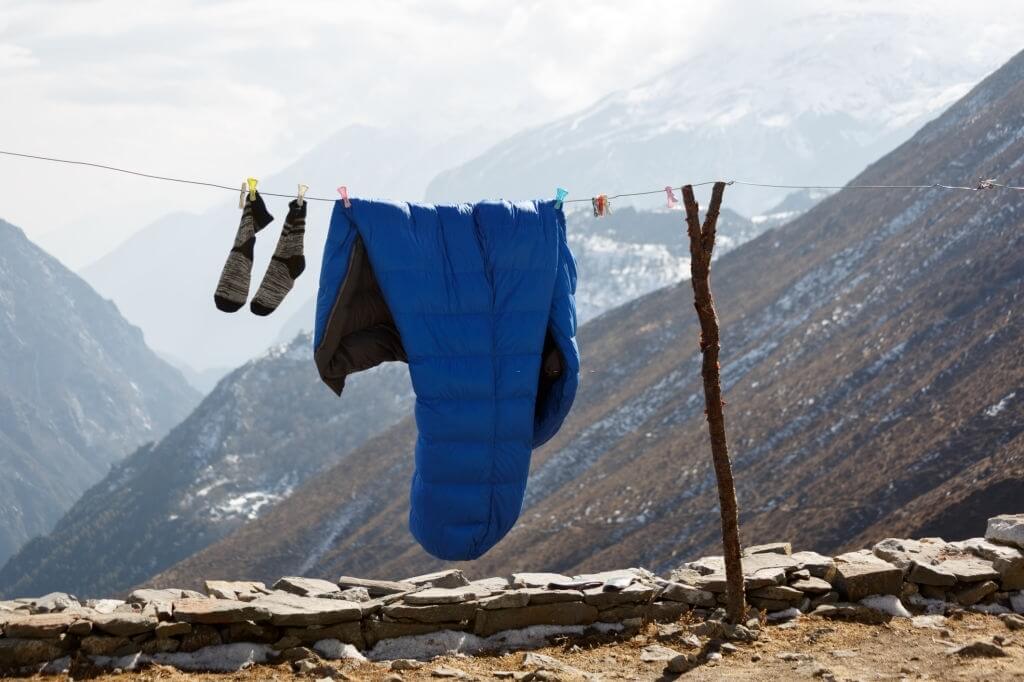
As aforementioned, a capable home dryer will be just fine to dry your down or synthetic sleeping bags. Else, you can ball-up your bag and carry it in a suitable bag to your local laundromat and dry it as guided above.
It’s never advisable to dry-clean your sleeping bag as most of the cleaning solutions used in the process damage your bag’s loftiness or insulative properties. Again, using high heat when drying the bag can easily melt the synthetic fill, which can be extremely dangerous to your health.
Even after using a dryer, it is always a good idea to hang up or lay out your sleeping bag for the night to ensure it dries completely.
If a dryer is not available, air drying is a good option for drying your sleeping bag but may take longer. Simply lay your bag flat on a clean surface wherever there is low humidity and no direct sunlight. You may also hang it on a clothesline but always ensure the bag’s weight is equally distributed.
Being out in nature is not always about enjoying spectacular views or taking on exciting trails. Sometimes it is filled with mundane and laborious activities such as pitching a tent, washing up the camping gear and scouting for new campsites.
Washing a sleeping bag is just one of the many things you’ll have to deal with as you go about your outdoor recreational activities. Inaction on that front will most likely lead to a less insulative, funky-smelling sleeping system, and eventually a restless night’s sleep.
Charlie Leone
Website Owner/Editor
Welcome to CampingManiacs